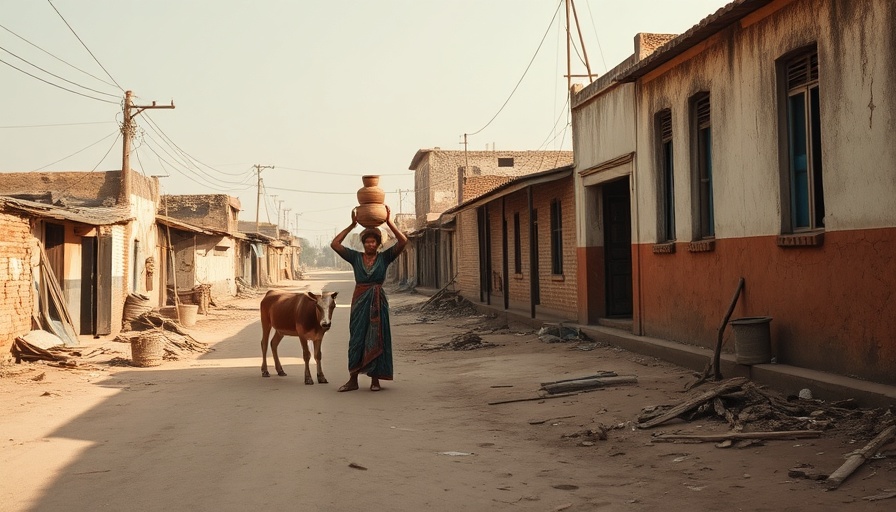
Rethinking Urban Definitions: A Sustainable Future for India's Growth
The rapid transformation of India's urban landscape demands a thoughtful reevaluation of what defines an "urban" space. Current bureaucratic frameworks, which rely on outdated metrics, fail to capture the complex and evolving nature of urbanization in India. A more progressive approach could foster sustainable development and improve living conditions for millions.
Understanding Urban Spaces Beyond Bureaucracy
In India, the existing definitions of urban areas hinge upon arbitrary metrics like population density, male workforce engagement, and governmental designations. This subjectivity can lead to significant exclusions, particularly for peri-urban communities where urban and rural characteristics coexist. These vital areas, though bustling with economic activities and diverse lifestyles, often remain overlooked despite their contributions to the economy and culture of the broader region.
For instance, using unconventional indicators such as the presence of McDonald's outlets as proxies for urbanization underscores a need for broader measures that reflect real economic activity and connectivity. These indicators not only highlight local economic engagement but also speak to consumer demands that drive urban growth.
The Need for a Multidimensional Approach
As projections indicate that over half of India’s population will reside in urban areas by 2050, the imperative to adopt a multidimensional definition becomes ever clearer. To facilitate based urban governance and resource allocation, metrics must extend beyond simplistic population counts. Including economic output, infrastructure resilience, and socio-cultural dynamics can illuminate the real characteristics of urban life.
Defining urban areas with a more inclusive perspective lays the groundwork for vital public policies. For example, regions exhibiting vibrant economic sectors and rich cultural dynamics should qualify as urban, regardless of their population size. Furthermore, physical connectivity and access to essential services are equally potent indicators of urban status.
Breaking Down Outdated Barriers
The rigid rules that classify many regions must be reconsidered to truly reflect India’s evolving urban tapestry. Areas with fluid boundaries—where residents commute between agricultural and urban jobs—highlight the complexities inherent in relying solely on occupational metrics. This unyielding binary label often fails to capture the hybrid livelihoods that are increasingly prevalent today.
To enable sustainable urban development, policymakers must acknowledge the interconnectedness of urban and rural economies. Effective governance should account for the realities of mobility and fluid living patterns, promoting integrated strategies that foster balanced regional growth.
Future Insights and Opportunities
As India continues to urbanize, it finds itself at a pivotal moment, where sustainable development can steer growth. Investing in green infrastructure, urban public transportation, and social inclusivity will not only propel cities into the future but also address significant challenges related to climate change and urban poverty. For example, green building practices must be expanded beyond premium developments to affordable housing and public infrastructure.
Moreover, the burgeoning demand for eco-friendly products and practices can transform urban landscapes into vibrant centers of sustainable living. By pioneering low-carbon pathways, India can create urban frameworks that reduce emissions while fulfilling the needs of its populous.
Embracing a Sustainable Vision
By redefining urban definitions to reflect the dynamic realities of contemporary society, India will set a transformative example on the global stage. As urban spaces expand, adopting practices that minimize carbon footprints and encourage sustainable living will be essential in shaping equitable future cities.
This transformation is not merely about policy changes; it reflects a collective responsibility to engage in conscious living. Communities, businesses, and governmental bodies must collaborate towards the goal of a sustainable future that encompasses all layers of urban existence, from small towns to densely populated megacities.
As India redefines its urban identity, it must strive to ensure no community is left behind. The sustainable practices adopted today will echo through generations, shaping vibrant urban environments characterized by equity, access, and thriving ecosystems.
Join the movement towards sustainable living! By making conscious choices in purchasing, advocating for environmental conservation, and supporting community gardens and renewable energy initiatives, we can all contribute to building a greener future.
 Add Row
Add Row  Add
Add 



Write A Comment